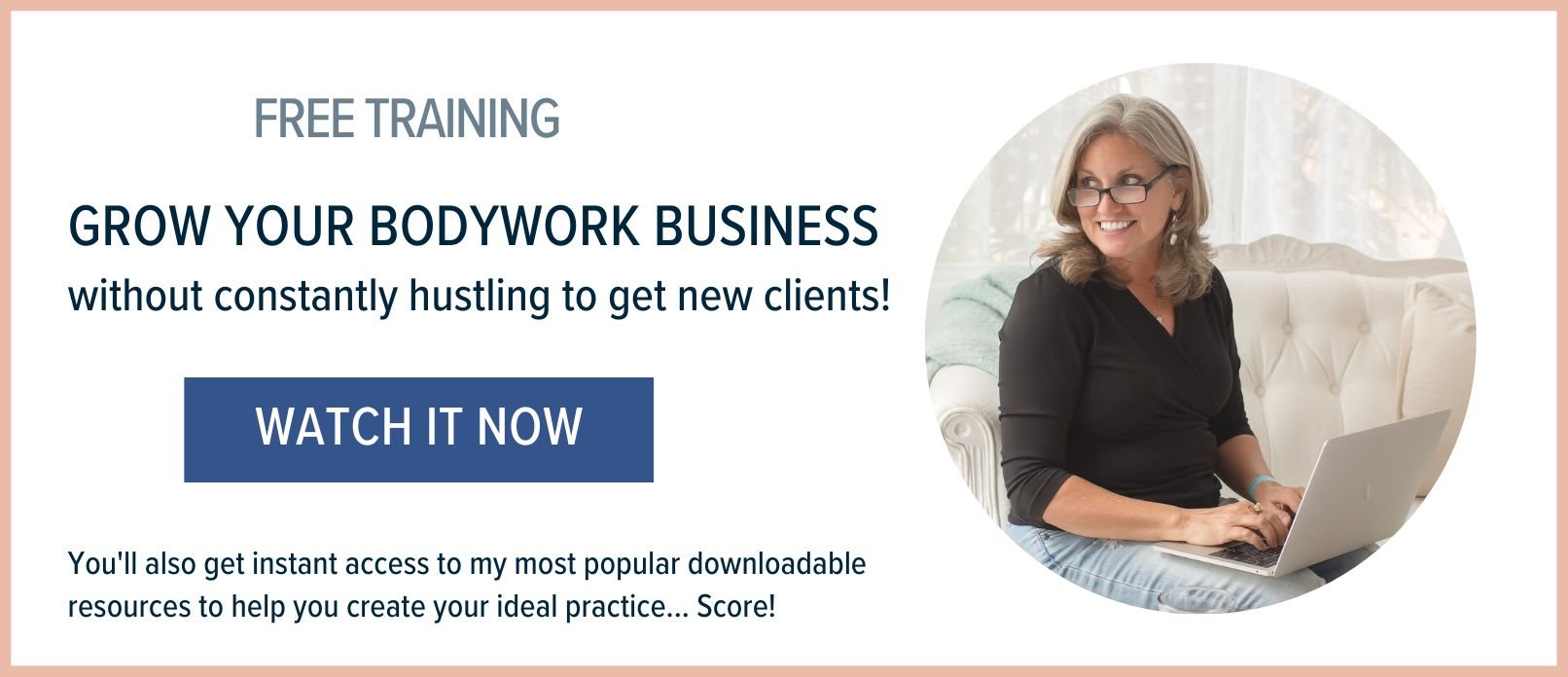How to Avoid Going Overtime with Your Clients
I know it's Wednesday, but this pic could be #TBT! It's from back when I was getting started in CranioSacral Therapy -- what feels like about 100 years ago!
When I look at this picture, I have such compassion for my younger self. I see someone who was doing terrific bodywork (look at that OCB release!), but wasn't quite as confident or secure as I could be in my ability to manage clients.
And I'm not alone. I get questions all the time about client management and working through sessions smoothly.
So to wrap up this series on Creating a Safe Container for Your Business, it's time to develop confidence in your ability to have healthy boundaries around your client sessions.
You can easily do this by setting expectations, guiding the session, and ending on time gracefully.
1. Setting Expectations.
It's up to you to set realistic expectations for a clients before each and every session.
When you ask a client before her session what she would like to focus on, she may answer with something like, "I've been having migraines, and my shoulder is bothering me, and I'm having trouble sleeping because of anxiety. Oh, and my gut has been giving me trouble."
Clearly, you can't work on all those issues and do a good job on all of them.
What too many bodyworkers do, then, is work with the client for over an hour, and that's the wrong approach to take.
Instead, you need to set realistic expectations for the session. You can say something like, "Wow, you've got a lot going on today. If we could just focus on one or two of those issues, which would you choose?"
That way, you can hone in on what the client's goals are for the session, and you can use her other comments to inform your hands, without going over your allotted time together.
2. Guide the session.
We've all been in sessions where the client is doing deep, therapeutic work. That's fantastic. The problem comes when that processing work goes on and on, deeper and deeper, and you don't know how to navigate the situation.
It's absolutely fine for you to gently guide the session -- not in its therapeutic unfolding -- but in a general, loving way of facilitation.
You can begin by saying something like, "So according to what you shared today, we'll have our intention for the session be to begin work to lessen your migraines, and then depending on timing, we'll move into working on your shoulder. How does that sound?"
Then, you can be open and aware during the session, being sure to follow the body's lead, without the session going off the rails.
You can also gently guide during the session: "Sally, you're doing wonderful work, and we've got about 15 minutes left. Are you comfortable continuing, or is there anything else you'd like to shift to during our remaining time?"
That way the client is in charge of the content of the session, and you are in charge of managing, or what I call creating a safe container, for the highest good to unfold.
3. Ending a session gracefully and on time.
As the session winds down, your client needs some time to integrate the work you've done together.
It can be jarring to tell a client, "OK, time's up!" if she is in the middle of processing either physically or emotionally.
So, if you feel it's appropriate, you can begin to wind the session down about 5 minutes before your ending time.
Try saying something like, "Sally, we've got about 5 minutes left in today's session, and you're doing terrific work. Could we put a bookmark here and come back to this place during our next session together? How does that sound?"
If she says that's fine, then you can say, "Great. Let's take the last 5 minutes for you to integrate all of the beautiful work you did today."
Then end the session using the marvelous techniques from your modality that encourage integration and wholeness.
These 3 steps will help you to gently guide your clients so that they get more out of their sessions with you, while allowing you to run your day smoothly and professionally.
Try them out then let me know how it goes in the comments below. I'd love to hear from you.
Remember, you want to be both the PRO and CEO of your business, so that you and your practice can soar!
You’re not alone — I’m holding you in my heart and cheering you on. You can do this!


